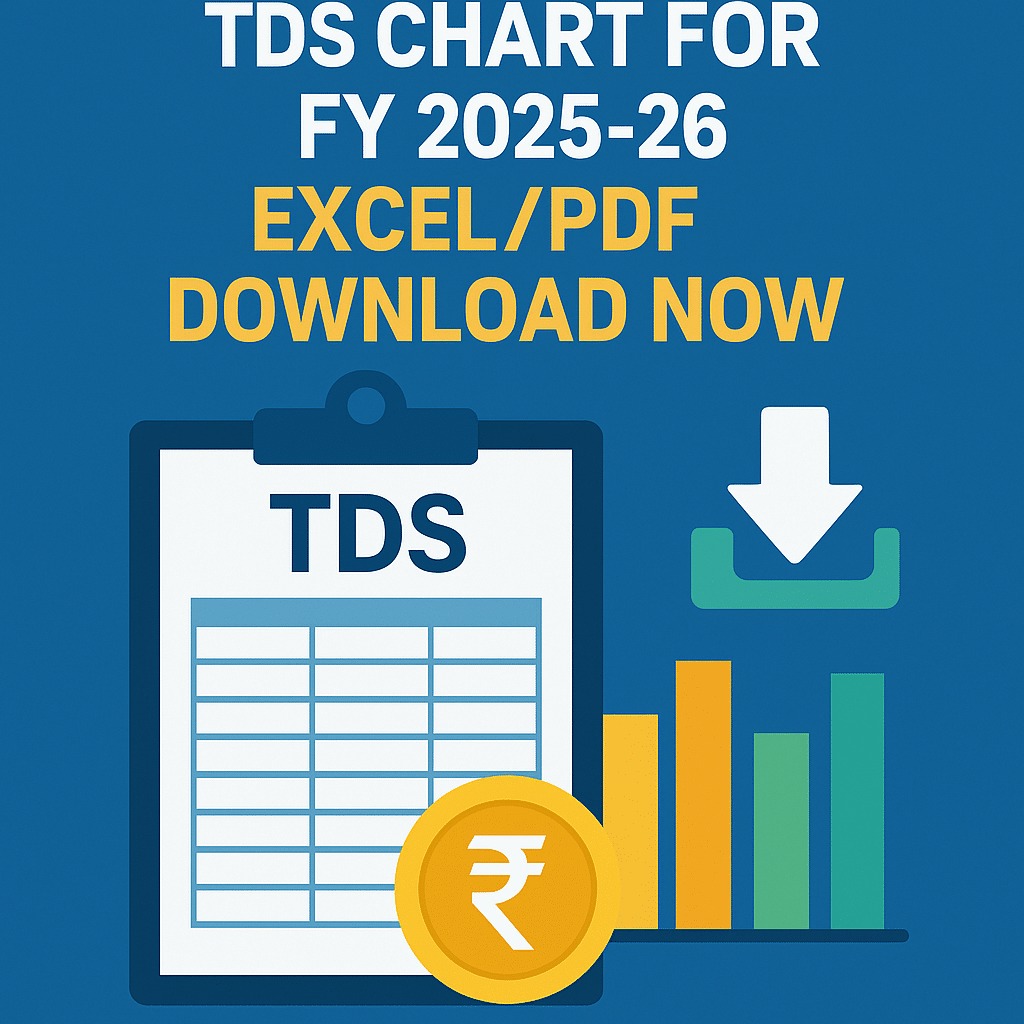
The Income Tax Department has released the latest TDS (Tax Deducted at Source) rate chart for the Financial Year 2025-26 (Assessment Year 2026-27), offering important updates for both individual taxpayers and businesses.
TDS is a mechanism where tax is deducted at the point of income generation. It helps streamline tax collection and ensures steady revenue inflow to the government. The new chart specifies various TDS rates applicable to different types of payments like salaries, rent, interest, professional fees, and commissions.
Key TDS Rates for FY 2025-26
Salary (u/s 192): Based on applicable income slab rates
Interest from banks (u/s 194A): 10% if PAN is provided, otherwise 20%
Rent of property (u/s 194I): 10% for land/building; 2% for plant/machinery
Professional fees (u/s 194J): 10% (or 2% for technical services)
Commission or brokerage (u/s 194H): 5%
Cash withdrawal over ₹1 crore (u/s 194N): 2%
TDS is not applicable where annual income falls below exemption limits or where Form 15G/15H is submitted, depending on eligibility.
Changes and Exemptions
The government has made no major changes in standard rates this year, though procedural compliance has been tightened. PAN-Aadhaar linking, timely filing, and e-verification remain mandatory to avoid higher TDS deductions.
Businesses making vendor or contractor payments must deduct TDS if the total payment exceeds ₹30,000 for a single transaction or ₹1 lakh annually. Non-resident payments attract different rates under sections like 195 and require special attention.
Importance for Small Businesses and Professionals
The update is especially relevant for startups, freelancers, and MSMEs, who often engage in professional contracts and services. Understanding TDS obligations can help avoid penalties and ensure smoother filing during returns.
Taxpayers are advised to verify TDS deductions via Form 26AS or AIS and reconcile any discrepancies before filing ITR for AY 2026-27.
![]()



